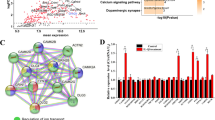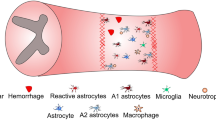Abstract
Schwann cell (SC) myelination is a pivotal event in the normal physiological functioning of the peripheral nervous system (PNS), where myelination is finely controlled by a series of factors within SCs to ensure timely onset and correct myelin thickness for saltatory conduction. Among these, cyclic AMP (cAMP) is a promising factor for driving myelin gene expression in SCs. It has been shown that TGR5 activation is often associated with increased production of cAMP. Therefore, we speculated that the G-protein-coupled receptor (TGR5) might be involved in the PNS myelination. To test this hypothesis, sciatic nerve crush-injured mice were treated with INT-777, a specific agonist of TGR5, which significantly improved remyelination and functional recovery. Furthermore, rats that underwent sciatic nerve transection were treated with INT-777, which also promoted nerve regeneration and functional recovery. In primary SCs, the stimulatory effect of INT-777 on myelin gene expression was largely counteracted by H89, a potent inhibitor of cAMP-dependent protein kinase A (PKA). Additionally, INT-777 stimulated cell migration was blunted in the presence of H89. Overall, these data indicate that INT-777 is capable of promoting peripheral nerve regeneration and functional recovery after injury, and these benefits are likely due to the activation of the TGR5/cAMP/PKA axis. As such, INT-777, together with other TGR5 agonists, may hold great therapeutic potential for treating peripheral nerve injury.







Similar content being viewed by others
Data Availability
All datasets generated and analyzed in this study are included in this published article. Materials are available upon reasonable request.
References
Garbay B, Heape AM, Sargueil F, Cassagne C (2000) Myelin synthesis in the peripheral nervous system. Prog Neurobiol 61:267–304
Saab AS, Nave KA (2017) Myelin dynamics: protecting and shaping neuronal functions. Curr Opin Neurobiol 47:104–112
Robinson LR (2000) Traumatic injury to peripheral nerves. Muscle Nerve 23:863–873
Chen ZL, Yu WM, Strickland S (2007) Peripheral regeneration. Annu Rev Neurosci 30:209–233
Nocera G, Jacob C (2020) Mechanisms of Schwann cell plasticity involved in peripheral nerve repair after injury. Cell Mol Life Sci 77:3977–3989
Scheib J, Höke A (2013) Advances in peripheral nerve regeneration. Nat Rev Neurol 9:668–676
Guo C, Chen WD, Wang YD (2016) TGR5, not only a metabolic regulator. Front Physiol 7:646
Deutschmann K, Reich M, Klindt C, Droge C, Spomer L, Haussinger D, Keitel V (2018) Bile acid receptors in the biliary tree: TGR5 in physiology and disease. Biochim Biophys Acta Mol Basis Dis 1864:1319–1325
Hu X, Yan J, Huang L et al (2021) INT-777 attenuates NLRP3-ASC inflammasome-mediated neuroinflammation via TGR5/cAMP/PKA signaling pathway after subarachnoid hemorrhage in rats. Brain Behav Immun 91:587–600
Lewis ND, Patnaude LA, Pelletier J et al (2014) A GPBAR1 (TGR5) small molecule agonist shows specific inhibitory effects on myeloid cell activation in vitro and reduces experimental autoimmune encephalitis (EAE) in vivo. PLoS One 9:e100883
Snider WD, Zhou FQ, Zhong J, Markus A (2002) Signaling the pathway to regeneration. Neuron 35:13–16
Zhou Y, Notterpek L (2016) Promoting peripheral myelin repair. Exp Neurol 283:573–580
Zhang Y, Jiang K, Xie G, Ding J, Peng S, Liu X, Sun C, Tang X (2021) FGF21 impedes peripheral myelin development by stimulating p38 MAPK/c-Jun axis. J Cell Physiol 236:1345–1361
Chen X, Yin Y, Zhang T, Zhao Y, Yang Y, Yu X, Wang H (2014) Ultrasound imaging of chitosan nerve conduits that bridge sciatic nerve defects in rats. Neural Regen Res 9:1386–1388
Liu X, Peng S, Zhao Y, Zhao T, Wang M, Luo L, Yang Y, Sun C (2017) AMPK negatively regulates peripheral myelination via activation of c-Jun. Mol Neurobiol 54:3554–3564
Weinstein DE, Wu R (2001) Isolation and purification of primary Schwann cells. Curr Protoc Neurosci Chapter 3, Unit 3:17
Shi H, Ju Q, Mao Y, Wang Y, Ding J, Liu X, Tang X, Sun C (2021) TAK1 phosphorylates RASSF9 and inhibits esophageal squamous tumor cell proliferation by targeting the RAS/MEK/ERK Axis. Adv Sci (Weinh) 8:2001575
Peng S, Wang C, Ma J, Jiang K, Jiang Y, Gu X, Sun C (2018) Achyranthes bidentata polypeptide protects dopaminergic neurons from apoptosis in Parkinson’s disease models both in vitro and in vivo. Br J Pharmacol 175:631–643
Varejao AS, Melo-Pinto P, Meek MF, Filipe VM, Bulas-Cruz J (2004) Methods for the experimental functional assessment of rat sciatic nerve regeneration. Neurol Res 26:186–194
Dayawansa S, Zhang J, Shih CH, Tharakan B, Huang JH (2016) Functional, electrophysiological recoveries of rats with sciatic nerve lesions following transplantation of elongated DRG cells. Neurol Res 38:352–357
Sun C, Wang M, Liu X et al (2014) PCAF improves glucose homeostasis by suppressing the gluconeogenic activity of PGC-1alpha. Cell Rep 9:2250–2262
Navarro X, Udina E (2009) Chapter 6: methods and protocols in peripheral nerve regeneration experimental research: part III-electrophysiological evaluation. Int Rev Neurobiol 87:105–126
Carr MJ, Johnston AP (2017) Schwann cells as drivers of tissue repair and regeneration. Curr Opin Neurobiol 47:52–57
Chijiwa T, Mishima A, Hagiwara M, Sano M, Hayashi K, Inoue T, Naito K, Toshioka T et al (1990) Inhibition of forskolin-induced neurite outgrowth and protein phosphorylation by a newly synthesized selective inhibitor of cyclic AMP-dependent protein kinase, N-[2-(p-bromocinnamylamino)ethyl]-5-isoquinolinesulfonamide (H-89), of PC12D pheochromocytoma cells. J Biol Chem 265:5267–5272
Prawitt J, Caron S, Staels B (2011) Bile acid metabolism and the pathogenesis of type 2 diabetes. Curr Diab Rep 11:160–166
Zheng X, Chen T, Jiang R et al (2021) Hyocholic acid species improve glucose homeostasis through a distinct TGR5 and FXR signaling mechanism. Cell Metab 33(791–803):e797
Guo J, Han X, Tan H, Huang W, You Y, Zhan J (2019) Blueberry extract improves obesity through regulation of the gut microbiota and bile acids via pathways involving FXR and TGR5. iScience 19:676–690
Kiriyama Y, Nochi H (2019) The biosynthesis, signaling, and neurological functions of bile acids. Biomolecules 9(6):232
Watanabe M, Houten SM, Mataki C et al (2006) Bile acids induce energy expenditure by promoting intracellular thyroid hormone activation. Nature 439:484–489
Pols TW, Nomura M, Harach T et al (2011) TGR5 activation inhibits atherosclerosis by reducing macrophage inflammation and lipid loading. Cell Metab 14:747–757
Kuhre RE, Wewer Albrechtsen NJ, Larsen O et al (2018) Bile acids are important direct and indirect regulators of the secretion of appetite- and metabolism-regulating hormones from the gut and pancreas. Mol Metab 11:84–95
Shapiro H, Kolodziejczyk AA, Halstuch D, Elinav E (2018) Bile acids in glucose metabolism in health and disease. J Exp Med 215:383–396
Perino A, Velazquez-Villegas LA, Bresciani N et al (2021) Central anorexigenic actions of bile acids are mediated by TGR5. Nat Metab 3:595–603
Jin P, Deng S, Tian M et al (2021) INT-777 prevents cognitive impairment by activating Takeda G protein-coupled receptor 5 (TGR5) and attenuating neuroinflammation via cAMP/ PKA/ CREB signaling axis in a rat model of sepsis. Exp Neurol 335:113504
Liang H, Matei N, McBride DW, Xu Y, Zhou Z, Tang J, Luo B, Zhang JH (2021) TGR5 activation attenuates neuroinflammation via Pellino3 inhibition of caspase-8/NLRP3 after middle cerebral artery occlusion in rats. J Neuroinflammation 18:40
McMillin M, Frampton G, Tobin R, Dusio G, Smith J, Shin H, Newell-Rogers K, Grant S et al (2015) TGR5 signaling reduces neuroinflammation during hepatic encephalopathy. J Neurochem 135:565–576
Zuo G, Zhang T, Huang L et al (2019) Activation of TGR5 with INT-777 attenuates oxidative stress and neuronal apoptosis via cAMP/PKCepsilon/ALDH2 pathway after subarachnoid hemorrhage in rats. Free Radic Biol Med 143:441–453
Jessen KR, Mirsky R, Lloyd AC (2015) Schwann cells: development and role in nerve repair. Cold Spring Harb Perspect Biol 7:a020487
Maruyama T, Miyamoto Y, Nakamura T, Tamai Y, Okada H, Sugiyama E, Nakamura T, Itadani H et al (2002) Identification of membrane-type receptor for bile acids (M-BAR). Biochem Biophys Res Commun 298:714–719
Salzer JL (2015) Schwann cell myelination. Cold Spring Harb Perspect Biol 7:a020529
Batty NJ, Fenrich KK, Fouad K (2017) The role of cAMP and its downstream targets in neurite growth in the adult nervous system. Neurosci Lett 652:56–63
Guo C, Xie S, Chi Z et al (2016) Bile acids control inflammation and metabolic disorder through inhibition of NLRP3 inflammasome. Immunity 45:802–816
Hu J, Wang C, Huang X et al (2021) Gut microbiota-mediated secondary bile acids regulate dendritic cells to attenuate autoimmune uveitis through TGR5 signaling. Cell Rep 36:109726
Kawamata Y, Fujii R, Hosoya M et al (2003) A G protein-coupled receptor responsive to bile acids. J Biol Chem 278:9435–9440
Yoon C, Korade Z, Carter BD (2008) Protein kinase A-induced phosphorylation of the p65 subunit of nuclear factor-kappaB promotes Schwann cell differentiation into a myelinating phenotype. J Neurosci 28:3738–3746
Howe DG, McCarthy KD (2000) Retroviral inhibition of cAMP-dependent protein kinase inhibits myelination but not Schwann cell mitosis stimulated by interaction with neurons. J Neurosci 20:3513–3521
Liu K, Lu Y, Lee JK et al (2010) PTEN deletion enhances the regenerative ability of adult corticospinal neurons. Nat Neurosci 13:1075–1081
Park KK, Liu K, Hu Y et al (2008) Promoting axon regeneration in the adult CNS by modulation of the PTEN/mTOR pathway. Science 322:963–966
Sun F, Park KK, Belin S et al (2011) Sustained axon regeneration induced by co-deletion of PTEN and SOCS3. Nature 480:372–375
Gu X, Ding F, Yang Y, Liu J (2011) Construction of tissue engineered nerve grafts and their application in peripheral nerve regeneration. Prog Neurobiol 93:204–230
Parrinello S, Napoli I, Ribeiro S et al (2010) EphB signaling directs peripheral nerve regeneration through Sox2-dependent Schwann cell sorting. Cell 143:145–155
Insel PA, Ostrom RS (2003) Forskolin as a tool for examining adenylyl cyclase expression, regulation, and G protein signaling. Cell Mol Neurobiol 23:305–314
Funding
This work was supported by the National Key Research and Development Program of China (2017YFA0701304); the National Natural Science Foundation of China (Nos. 81970747; 32271193); the Science and Technology Project of Nantong (No. JC2021068); and the Priority Academic Program Development (PAPD) of Jiangsu Higher Education Institutions.
Author information
Authors and Affiliations
Contributions
Conceptualization, C.S.; investigation, X.L., J.G., and Z.W.; formal analysis, X.L. and J.G.; writing (original draft preparation), X.L. and G.L.; writing (review and editing), L.X. and C.S.; supervision, C.S.; project administration, L.X. and C.S.; funding acquisition, X.L., L.X. and C.S.
Corresponding authors
Ethics declarations
Ethics Approval
All animal experiments were performed with the approval of the Nantong University Animal Ethics Committee.
Consent to Participate
Not applicable.
Consent for Publication
All authors have given consent for publication.
Competing Interests
The authors declare no competing interests.
Additional information
Publisher's Note
Springer Nature remains neutral with regard to jurisdictional claims in published maps and institutional affiliations.
Rights and permissions
Springer Nature or its licensor (e.g. a society or other partner) holds exclusive rights to this article under a publishing agreement with the author(s) or other rightsholder(s); author self-archiving of the accepted manuscript version of this article is solely governed by the terms of such publishing agreement and applicable law.
About this article
Cite this article
Liu, X., Guan, J., Wu, Z. et al. The TGR5 Agonist INT-777 Promotes Peripheral Nerve Regeneration by Activating cAMP-dependent Protein Kinase A in Schwann Cells. Mol Neurobiol 60, 1901–1913 (2023). https://doi.org/10.1007/s12035-022-03182-x
Received:
Accepted:
Published:
Issue Date:
DOI: https://doi.org/10.1007/s12035-022-03182-x




